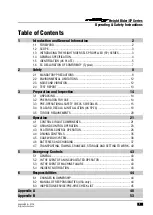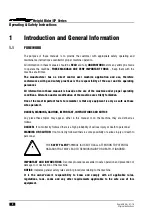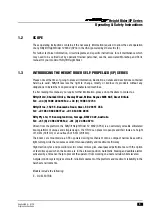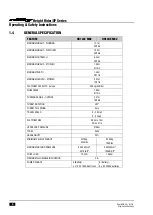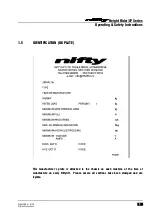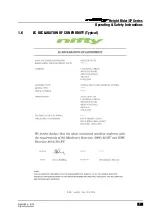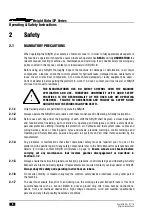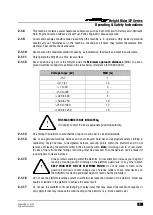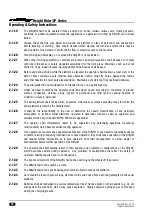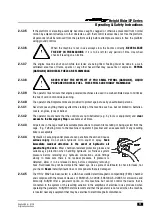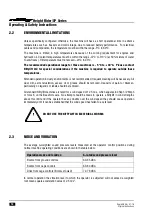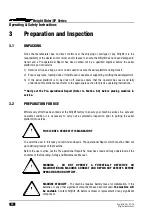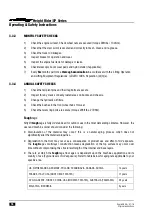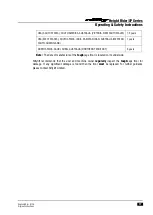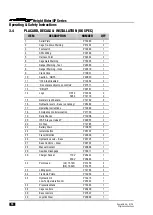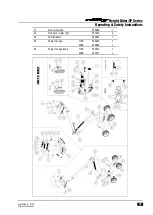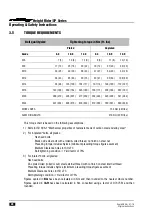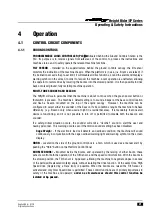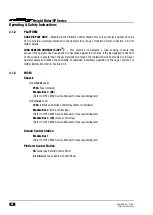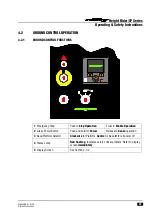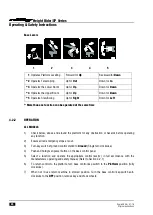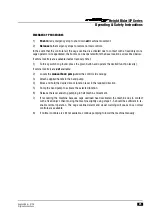
Height Rider/SP Series
Operating & Safety Instructions
English/USA – 01/18
Original instructions
10
2.1.18
The Niftylift shall not be operated from a position on trucks, trailers, railway cars, floating vessels,
scaffolds or similar equipment unless the application is approved in writing by Niftylift Ltd in Great
Britain.
2.1.19
Always check that the area below and around the platform is clear of personnel and obstructions
before lowering or slewing. Care should be taken when slewing out into areas where there may be
passing traffic. Use barriers to control traffic flow or prevent access to the machine.
2.1.20
Stunt driving and horseplay, on or around the Niftylift, is not permitted.
2.1.21
When other moving equipment or vehicles are present, special precautions shall be taken to comply
with local ordinances or safety standards established for the work place. Warnings, such as but not
limited to, flags, roped off areas, flashing lights and barricades shall be used.
2.1.22
Before and during driving while the platform is elevated, the operator shall maintain a clear view of the
path of travel, maintain a safe distance from obstacles, debris, drop offs, holes, depressions, ramps
and other hazards to ensure safe elevated travel. Maintain a safe distance from overhead obstacles.
2.1.23
The aerial platform is not equipped for or intended for use on a public highway.
2.1.24
Under all travel conditions the operator shall limit travel speed according to conditions of ground
surface, congestion, visibility, slope, location of personnel and other factors causing hazards of
collision or injury to personnel.
2.1.25
The aerial platform shall not be driven on grades, side slopes or ramps exceeding those for which the
aerial platform is rated by the manufacturer.
2.1.26
It shall be the responsibility of the user to determine the hazard classification of any particular
atmosphere or location. Aerial platforms operated in hazardous locations shall be approved and
suitable for the duty. (See ANSI/NFPA 505 where applicable).
2.1.27
The operator shall immediately report to his supervisor any potentially hazardous location(s)
(environment) which become evident during operation.
2.1.28
If an operator encounters any suspected malfunction of the Niftylift or any hazard or potentially unsafe
condition relating to capacity, intended use or safe operation, they shall cease operation of the Niftylift
and request further information as to safe operation from their management, or owner, dealer or
manufacturer before further operation of the Niftylift.
2.1.29
The operator shall immediately report to their superior any problems or malfunctions of the Niftylift,
which becomes evident during operation. Any problems or malfunctions that affect the safety of
operation shall be repaired prior to continued use.
2.1.30
The boom and platform of the Niftylift shall not be used to jack the wheels off the ground.
2.1.31
The Niftylift shall not be used as a crane.
2.1.32
The Niftylift shall not be positioned against another object to steady the platform.
2.1.33
Care should be taken to prevent rope, electrical cords and hoses from becoming entangled in the aerial
platform.
2.1.34
Batteries shall be recharged in a well-ventilated area free of flame, sparks or other hazards (e.g. do not
smoke near the machine), which may cause explosion. Highly explosive hydrogen gas is produced
during the charging process.
Summary of Contents for HR 12
Page 77: ......



